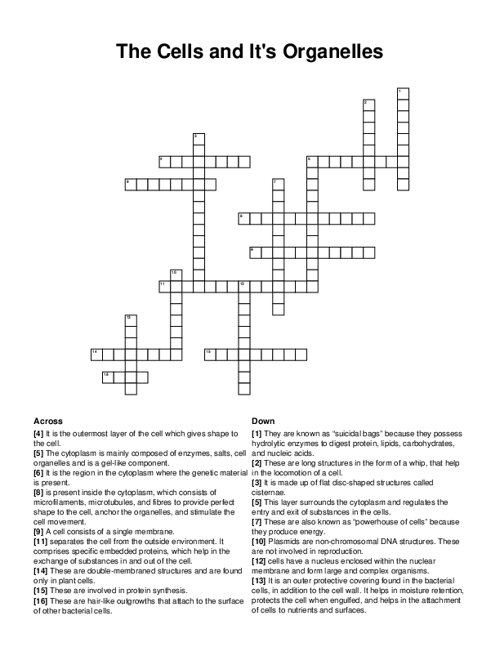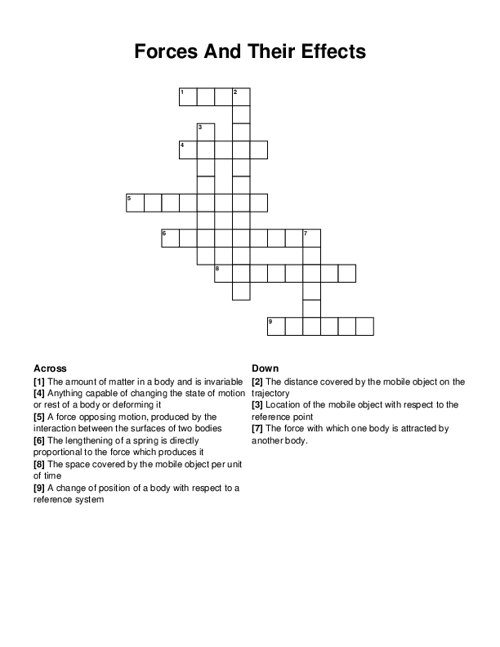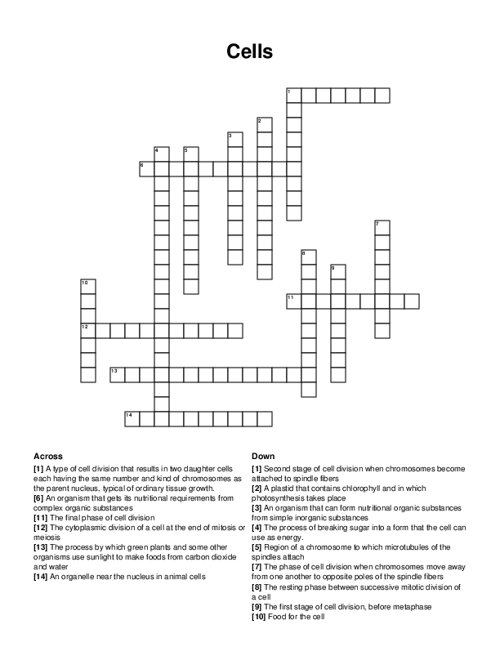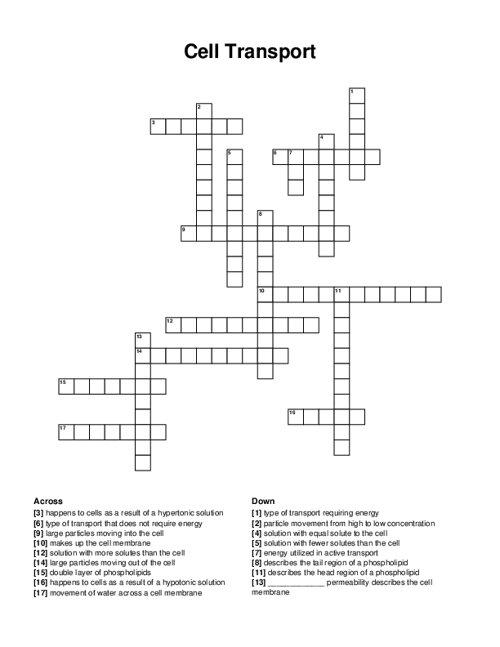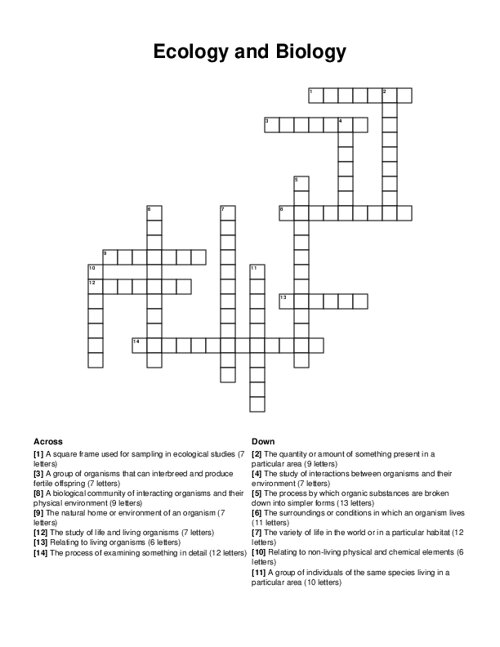The Cells and It's Organelles Crossword Puzzle
Download and print this The Cells and It's Organelles crossword puzzle.
Related puzzles:
QUESTIONS LIST:
- prokaryotic : a cell consists of a single membrane.
- capsule : it is an outer protective covering found in the bacterial cells, in addition to the cell wall. it helps in moisture retention, protects the cell when engulfed, and helps in the attachment of cells to nutrients and surfaces.
- cell wall : it is the outermost layer of the cell which gives shape to the cell.
- cytoplasm : the cytoplasm is mainly composed of enzymes, salts, cell organelles and is a gel-like component.
- cell membrane : this layer surrounds the cytoplasm and regulates the entry and exit of substances in the cells.
- pili : these are hair-like outgrowths that attach to the surface of other bacterial cells.
- flagella : these are long structures in the form of a whip, that help in the locomotion of a cell.
- ribosomes : these are involved in protein synthesis.
- plasmids : plasmids are non-chromosomal dna structures. these are not involved in reproduction.
- nucleoid : it is the region in the cytoplasm where the genetic material is present.
- eukaryotic : cells have a nucleus enclosed within the nuclear membrane and form large and complex organisms.
- plasma membrane : separates the cell from the outside environment. it comprises specific embedded proteins, which help in the exchange of substances in and out of the cell.
- cytoskeleton : is present inside the cytoplasm, which consists of microfilaments, microtubules, and fibres to provide perfect shape to the cell, anchor the organelles, and stimulate the cell movement.
- golgi apparatus : it is made up of flat disc-shaped structures called cisternae.
- mitochondria : these are also known as “powerhouse of cells” because they produce energy.
- lysosomes : they are known as “suicidal bags” because they possess hydrolytic enzymes to digest protein, lipids, carbohydrates, and nucleic acids.
- plastids : these are double-membraned structures and are found only in plant cells.
